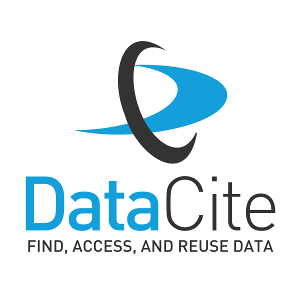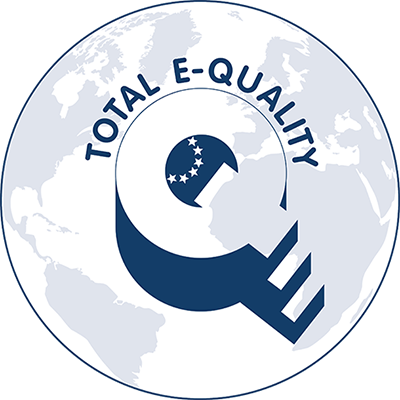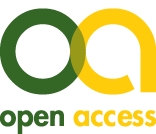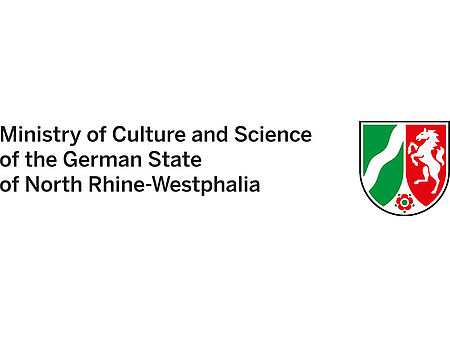Predatory or bogus journals in open access publishing
What is predatory publishing?
Many open access journals are funded by article processing charges (APCs), also known as publication fees. A small number of these journals are deceptive or bogus publications, commonly known as predatory journals, which provide little or no editorial or publishing services in return for the money they charge.
These kinds of business practices are often referred to as “predatory publishing”. In many cases this method of doing business is associated with spam emails which encourage authors to submit their work. These emails often include details designed to tempt authors, such as unrealistically short deadlines by which the journal insists it can complete the peer review process.
While the dubious nature and intentions of some journals are obvious at first glance – for example due to multiple typing and printing errors in their emails and on their website – others may initially appear legitimate until some further investigations are carried out. The reason some of these predatory journals appear professional is that they often make their website and academic credentials look very similar to those of well-known, legitimate journals in order to deliberately confuse people. Sometimes they even pretend that their editorial board includes well-known scientists who, in reality, have nothing whatsoever to do with the journal.
The journal industry also has an area that is difficult to quantify. This includes journals with perfectly respectable intentions that have not yet implemented the publishing standards that are customary in their particular field. This makes them appear less professional.
It is therefore important to remain sceptical when considering where to submit your article, especially if you’re dealing with lesser-known open access journals. There are many different ways in which you can check before submission whether a journal is legitimate.
How to check – list of criteria
The following criteria are often suggested as a means of determining whether a journal is reputable:
- Is the website consistent and coherent or have chunks of it been copied across from other websites?
- Does the journal appear in the indexes of the databases it claims to form part of? Are these literature databases used regularly in the relevant field?
- Has the journal genuinely been ranked by Journal Citation Reports? In other words, does it have an ‘official’ journal impact factor (JIF)? It is worth noting that journals are not even entitled to receive an impact factor until their third year of publication. However, disreputable journals will sometimes simply invent metrics that look similar to the journal impact factor or calculate it themselves on the basis of different data sets.
- Is the publishing house a member of the “Open Access Scholarly Publishers Association” (OASPA) or the “Committee on Publication Ethics” (COPE)? Can their membership be verified?
- Does the publisher imply that the peer review process can be completed within an unrealistically short space of time? Reputable journals generally require several weeks for this process, or even months. Very short deadlines indicate that the peer review process may be inadequate or may not take place at all.
- Do the contractual arrangements appear to be legitimate and reputable? Authors retain their exploitation rights when publishing articles in open access journals. In addition, publication fees should only be charged once a publication has been accepted, and the article processing charges should be clearly stated on the website. Any contradictory information or discrepancies imply an inconsistent and possibly unprofessional approach.
There are still a number of elements missing from this list. A number of additional criteria have been proposed by the Think.Check.Submit initiative.
In many cases, the only way to obtain an accurate picture is to consider a combination of multiple criteria. You can find more information on this issue in the report on the ZB MED workshop held in December 2018.
If you still have any doubts, we recommend discussing your misgivings with colleagues in your field or with the library staff.
Other sources of information
A whole series of platforms are now available which can be used to acquire information on open access journals. These platforms not only help authors to determine if a journal is reputable, but also tackle other aspects such as their article processing charges, the way in which they conduct the peer review process, etc. There is a wide variation in the number of journals evaluated by each of these platforms, but they offer a good way of acquiring additional information.
One of the most popular platforms:
Directory of Open Access Journals (DOAJ)
Green Lists and Red Lists
One commonly voiced opinion is that the use of red lists and green lists would make it simpler to choose journals and help curb the spread of disreputable publications. Thus, red lists feature journals that are confirmed or alleged to be predatory, while green lists provide a list of journals that are recommended for publishing.
The best known red list of predatory journals is Beall’s List, named after the American librarian Jeffrey Beall, who first drew up the list. The list is regarded as controversial because it is highly subjective. It is no longer available on the original website, though it is still being maintained by anonymous providers at a different location.
The scholarly analytics company Cabell's offers both a commercial green list and a red list, though access to these requires a licence.
Ultimately, however, the idea of solely consulting red lists or greenlists to determine whether a journal or publishing house is reputable is considered to be extremely problematic. Red lists may feature journals that are actually legitimate but that do not yet meet the publishing standards that typically apply in that field, making them appear less professional. Due to the difficulty of removing information from the Internet, a journal may end up being stuck with the label of ‘predatory journal’ long after it has become more professional. Depending on the criteria they are based on, green lists tend to be very selective and therefore incomplete. Rigorous inspection processes may also lead to lengthy delays in journals being included in the list.
An alternative strategy is to choose a journal based on whether it appears in certain interdisciplinary databases such as Web of Science, Scopus or PubMed – in other words, to treat these databases as a form of green list. According to some studies, however, bogus journals do occasionally find their way into these databases, though generally only temporarily.
Why is predatory publishing such a big problem?
Quite apart from the fact that it represents an attempt to deceive people and contradicts the goals of scientific rigour and honesty, the other problem of predatory publishing is its inadequate peer review process. This could lead to the publication of results which have not been properly checked and reviewed ¬ and that could ultimately even cause damage in fields such as medicine.
What’s more, publication in a predatory journal often raises the suspicion that an article is of poor quality. However much time the author invested in their work, and however valuable the findings may be to the respective scientific community, the dubious nature of the journal means the author cannot use the article to build their reputation.
Claimed editorial boards which do not really exist can bring prestigious scientists into disrepute.
So are open access journals fundamentally flawed?
Although predatory publishing is often used by critics as an argument against the open access movement, it should not actually be taken to mean that open access journals are fundamentally flawed. The majority of journals that operate in the market are reputable and have implemented the kind of quality assurance procedures for content that are customary in their relevant field (peer review).
How to deal with predatory journals and the articles they contain
Deliberately using a predatory journal’s “publishing services” in order to avoid critical peer review may be regarded as a form of research misconduct.
If you know that an article has been published in a predatory journal, you should not refer to it or cite it unless you have carefully checked and scrutinised its results. Bogus journals should be given as little visibility and impact as possible.
I submitted an article to a predatory journal by mistake. What should I do now?
The first thing to do is to ask your institution whether they have a specific procedure for dealing with this situation. The remedies available to authors are often fairly limited because predatory journals are primarily interested in maximising their profits rather than upholding the principles of good research practice. As a result, they often fail to observe ethical publishing standards. Nonetheless, the following strategies may offer a useful starting point:
- Do not sign an author’s contract and, even more importantly, do not pay an article processing charge, giving as a reason the failure to conduct a peer review and/or the lack of transparency; alternatively, insist on a proper, substantive peer review report.
- Retract the article and refuse to pay any “withdrawal fees” or “retraction fees” even if the journal operator pressures you to do so.
- If the article has already been published and the journal refuses to retract the article, one option is to move the article to the “non-peer-reviewed” section of your own list of publications.
- Contact the editors of a reputable journal, explain the situation and ask them if they will allow you to re-submit your manuscript to them so that it can undergo a proper peer review process.
It may be worth considering taking legal action, or at least threatening to do so, though predatory journals are often based in other countries and are out of the law’s reach.
Remember that openly acknowledging that you made a mistake in choosing a predatory journal can be a useful lesson for the scientific community and is not likely to damage your reputation.
Application to conferences – predatory conferences and predatory meetings
Experts in the field are increasingly extending these warnings about predatory practices to conferences that issue blanket calls for the submission of contributions and demand unusually high participation fees from speakers. After sending payment, participants may be told, for example, that the conference will only be held as a virtual event. Alternatively, the organisers may reveal that they are holding multiple conferences in the same location on the same dates – a strategy that serves to maximise their profits. There are also cases of conferences that have an unusually broad subject matter and target audience. Participation in these kind of conferences typically turns out to be pointless because of the lack of opportunity to interact with peers from the same field. The Think Check Attend platform lists criteria that can be used to identify disreputable conferences.
Again, if you submit a proposal to a predatory conference by mistake, the important thing is not to sign any contracts or make any payments and to refrain from participating in the conference at all. If a conference has been classified as predatory, many employers will refuse to reimburse whatever participation fees, travel expenses, etc. you have already paid.
Predatory rankings for institutions and journals
Institutional rankings and other types of rankings are used to document an institution’s performance and standing in the research community and to make comparisons with other institutions. Recently, there have been reports of ranking systems that fail to clearly reveal how they calculate their results. What’s more, some scientists and institutions have been offered the chance to appear in certain rankings in return for payment. Such schemes are often referred to as “predatory rankings”.
One of the strategies used by bogus journals is to feign legitimacy and scholarly value by simply inventing indicators or by appearing in lesser-known journal ranking systems or indexing services. They are assisted in this task by websites featuring journal rankings that are based on murky or questionable methodologies. In many cases, predatory rankings make use of misleading metrics in an attempt to imitate the journal impact factor (JIF), which is still used by some communities as a basis for choosing a journal. They may also use similar-sounding names for their invented indicators in order to create confusion.
Both of these methods violate ethical publishing standards and the principles of good research practice and should be firmly discouraged. False rankings and misleading metrics should never be used as a basis for deciding on the merits of a journal or institution.
See also
Peer Review: Why is it important?
An introduction to good research practice, research misconduct and academic integrity
Selecting a journal: How to find a suitable journal for publishing research results
Disclaimer
Important note: The information and links provided here do not represent any form of binding legal advice. They are solely intended to provide an initial basis to help get you on the right track. ZB MED – Information Centre for Life Sciences has carefully checked the information included in the list of FAQs. However, we are unable to accept any liability whatsoever for any errors it may contain. Unless indicated otherwise, any statements concerning individual statutory norms or regulations refer to German law (FAQ updated 05/2023).
Contact

Dr. Jasmin Schmitz
Head of Publication Advisory Services
Phone: +49 (0)221 999 892 665
Send mail
References
Estelle, L. (2022). Guest article: Avoiding predatory publishers. Publicationethic.org, 10. February 2022 (accessed 30/05/2023)
N.N. (2016). Withdrawal of accepted manuscript from predatory journal. Publicationethics.org, 2016 (accessed 30/05/2023)
Demir, S. B. (2020). Scholarly databases under scrutiny. Journal of Librarianship and Information Science, 52(1), 150–160.
Chawla, D.S. (2021). Researchers sound alarm on ‘predatory’ rankings. Retractionwatch.com, 07. December 2021 (accessed 30/05/2023)
Dadkhah, M. et al. (2022). How Frequent is the Use of Misleading Metrics? A Case Study of Business Journals. The Serials Librarian, 83:2, 197-204.
Related links
Open Access Scholarly Publishers Association (OASPA)
Committee of Publication Ethics (COPE)
Directory of Open Access Journals (DOAJ)
Think. Check. Submit.
Think. Check. Attend.
Cabell's Scholarly Analytic
Schmitz, J. et al. (2018). Dokumentation zum Vernetzungsworkshop zu Predatory Publishing bei ZB MED. ZB MED Informationszentrum Lebenswissenschaften, 20 December 2018. (accessed 20/12/2022) (German only)
Further information (German only)
Publisso (2020). Predatory Publishing: Wie kann ich beim Publizieren oder Lesen unseriöse Open-Access-Zeitschriften erkennen? [flyer] ZB MED-Publikationsportal Lebenswissenschaften.
Bartlewski, J. & Schmitz, J. (2020). Das nehmen wir aber jetzt persönlich! – Analyse von SPAM-Mails von Zeitschriften und Konferenzen. ZB MED Informationszentrum Lebenswissenschaften, 3 December 2020. (accessed 20/12/2022)
Schmitz, J. & Schmeja, S. (2019). Bericht zum Workshop „Was tun, wenn es passiert ist? Umgang mit Publikationen, die bei einem Predatory Journal eingereicht wurden.“ ZB MED Informationszentrum Lebenswissenschaften, 29 November 2019. (accessed 20/12/2022)
Schmitz, J. (2024). Journal Hijacking: Neues Vorgehen stellt wissenschaftliches Publikationswesen vor weitere Herausforderungen. ZB MED Informationszentrum Lebenswissenschaften, 20. February 2024. (accessed 14.02.2025)
Schmitz, J. (2024). Beyond Predatory Publishing: Additional Questionable Offers in Scholarly Publishing. Scholarly Communications in Transition, 10. January 2024. (accessed 14.02.2025)
Schmitz, J. (2025). Wie Hijacked Journals und Paper Mills den wissenschaftlichen State-of-the-Art verunreinigen. b.i.t. online, 28 (1), S.19-26, 20. Febuar 2025. (accessed 11.04.2025)
Schmitz, J & Janßen, J. (2025). Räuberische Konferenzen – eine vielleicht noch zu wenig beachtete Spielart von Predatory Practices. ZB MED-Blog, 24. Februar 2025 (accessed 11.04.2025)
Schmitz, J. & Siegfried, D. (2025). Paper Mills und Fake Journals - Wissenschaftlicher Betrug im großen Stil [Podcast]. The Future is Open Science, Episode 54, ZBW – Leibniz-Informationszentrum Wirtschaft, 29. September 2025 (accessed 06.10.2025)




